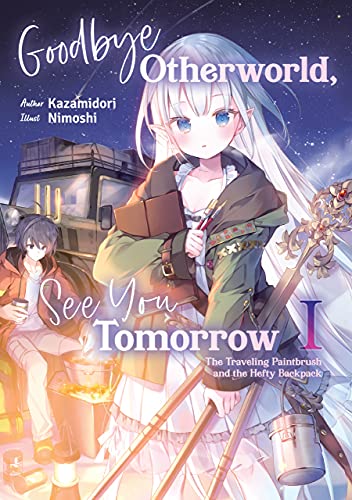By Kazamidori and Nimoshi. Released in Japan as “Sayonara Isekai, Mata Kite Ashita” by Fujimi Fantasia Bunko. Released in North America digitally by J-Novel Club. Translated by MPT.
There’s a wonderful moment in this book where someone points out to Keisuke one of the big reasons that he’s constantly identified as someone from another world, and it’s because he actually has optimism and positivity despite the fact that the world has ended. It’s an important thing to have, especially going forward as there are fewer and fewer people. Fortunately, that’s not quite true, as Keisuke coming into her life has made Nito a massive ball of sunshine and cuteness, to the point where it’s practically weaponized to use against the rest of the cast in this book. That said, the book is not all good times and fluffiness. As you read you will feel a war going on between positivity and hope on the one hand, and melancholy and regrets on the other. One side does win, but it’s a struggle, and while we don’t have suicide attempts like the first book, this book has some people who have mostly given up on life.
While the previous book had Keisuke and Nito traveling around to various places and interacting with the folks they find there, this book mostly centers around one area. Arriving at a village temple, they stay there for a few days with the old woman who cleans it when she’s not busy running her shoe workshop. Also there is Charolles, a young woman who is searching for the ending of an incomplete book that she once read. A little ways away, in a more built-up area, is a theater containing Paula, a wannabe dancer, and Jill, a very shy singer, as well as Monty, a guinea pig the size of a man who smokes a pipe. Naturally, over the course of this book, Keisuke and Nito find that all these characters have pasts with each other in some way, and are also consumed by fears. There’s only one way to solve this: have a festival!
There is some terrific trans representation here, with the reunion of Paula and Fago hitting the reader hard. I also enjoyed seeing the terminally introverted Jill force herself to interact with the others and even sing in public in order to help Paula. That said, my favorite character here was Charolles, who gets the most screen time and also most of the art within the book. (I was vaguely annoyed we did not get art of Paula and Jill.) Charolles’ journey is very similar to Nito’s, but she’s older and more cynical, and she’s the one who I was most worried about finding dissolved in a pile of crystals by the end of the book. Fortunately that does not happen, but she also very pointed does not join Keisuke and Nito on their travels (possibly sensing their relationship is a lot more romantic than either wants to say.) I hope things work out for her.
This volume has an open ending, but there’s no more volumes out in Japan, so if it does continue it will be a while. Still, I definitely recommend it. Great characters, great moody writing, and emotional.


